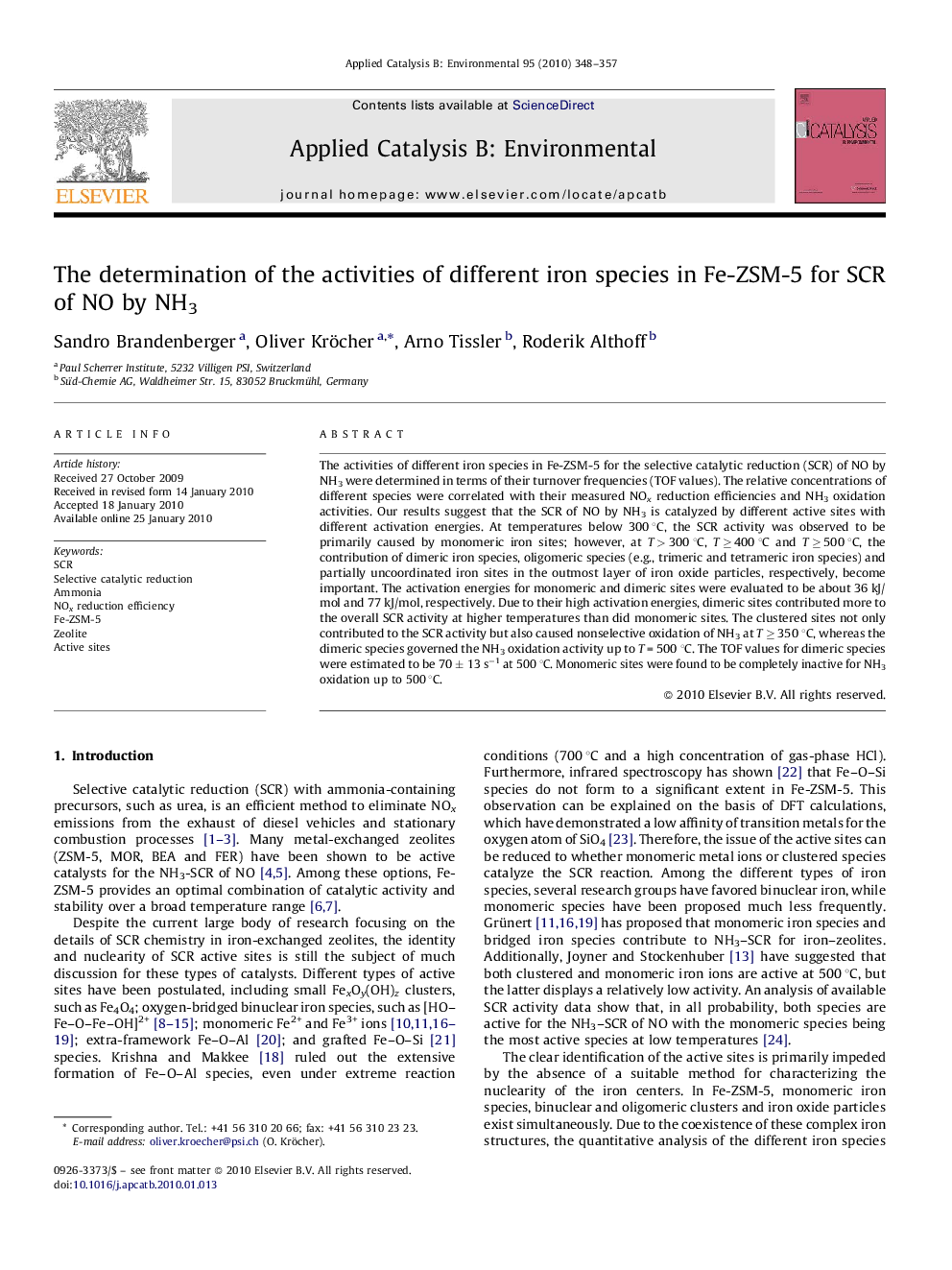| Article ID | Journal | Published Year | Pages | File Type |
|---|---|---|---|---|
| 47490 | Applied Catalysis B: Environmental | 2010 | 10 Pages |
The activities of different iron species in Fe-ZSM-5 for the selective catalytic reduction (SCR) of NO by NH3 were determined in terms of their turnover frequencies (TOF values). The relative concentrations of different species were correlated with their measured NOx reduction efficiencies and NH3 oxidation activities. Our results suggest that the SCR of NO by NH3 is catalyzed by different active sites with different activation energies. At temperatures below 300 °C, the SCR activity was observed to be primarily caused by monomeric iron sites; however, at T > 300 °C, T ≥ 400 °C and T ≥ 500 °C, the contribution of dimeric iron species, oligomeric species (e.g., trimeric and tetrameric iron species) and partially uncoordinated iron sites in the outmost layer of iron oxide particles, respectively, become important. The activation energies for monomeric and dimeric sites were evaluated to be about 36 kJ/mol and 77 kJ/mol, respectively. Due to their high activation energies, dimeric sites contributed more to the overall SCR activity at higher temperatures than did monomeric sites. The clustered sites not only contributed to the SCR activity but also caused nonselective oxidation of NH3 at T ≥ 350 °C, whereas the dimeric species governed the NH3 oxidation activity up to T = 500 °C. The TOF values for dimeric species were estimated to be 70 ± 13 s−1 at 500 °C. Monomeric sites were found to be completely inactive for NH3 oxidation up to 500 °C.
